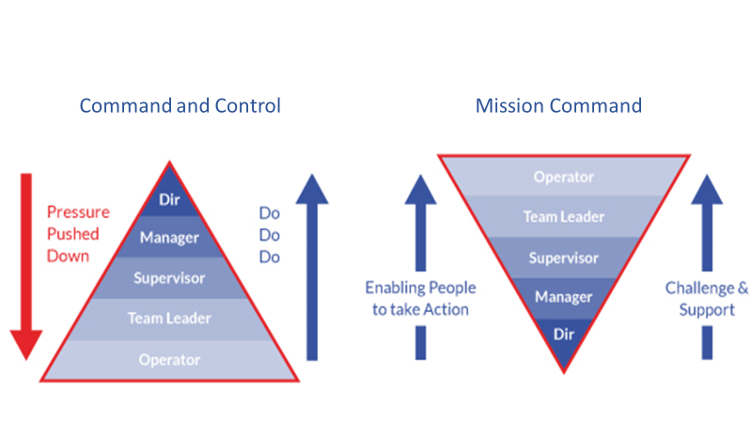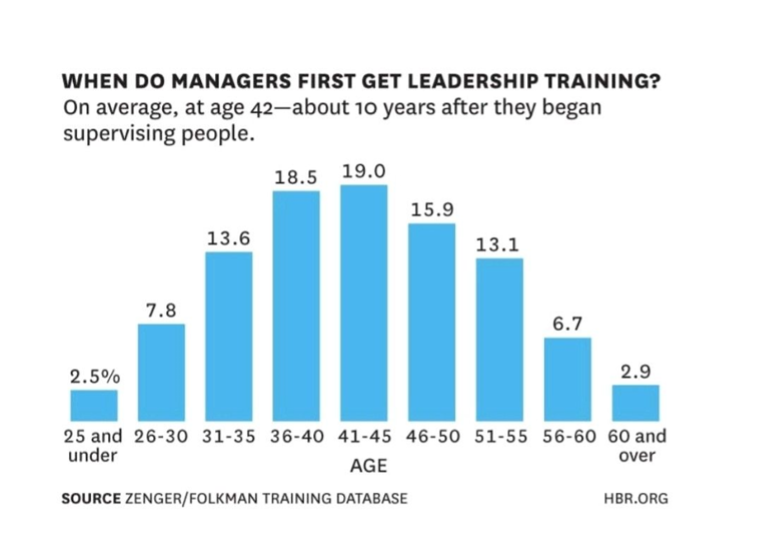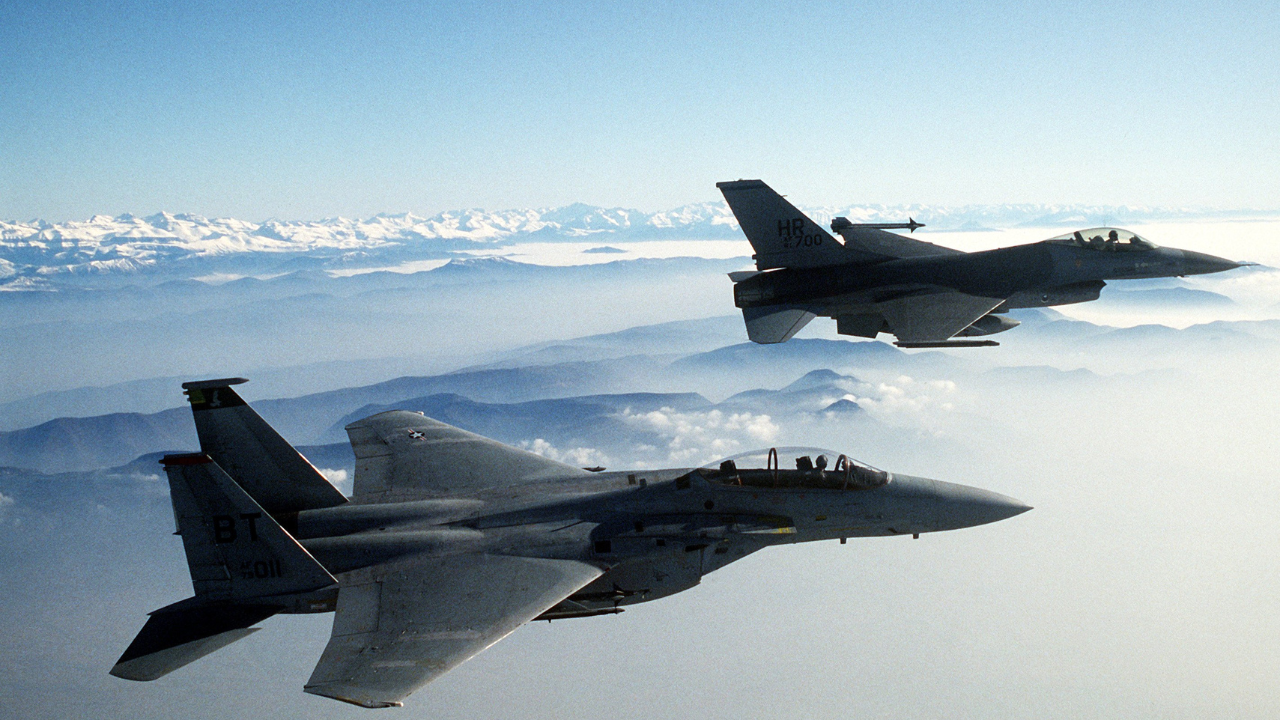The Maintenance Leader’s Journey from ‘Command and Control’ to ‘Mission Command’
Dr Anthony Kenneson-Adams. MA. Bsc(Hons). FInstLM. Royal Air Force (Ret’d)
Posted 05/02/2023
2 Styles of Leadership: Command and Control and Mission Command
Every maintenance leader has their own leadership style either by intent or nature. In the past the leader was able to choose their own style, but to attract and retain the best people today, employees are demanding a style of leadership that is not only open and engaging but nurturing and inclusive. In an era where job satisfaction is more important than ‘job for life’ employees are far less likely to stay where they are not happy and therefore leadership has to change to meet the challenge of attracting and retaining the best from the limited pool available and then nurturing these individuals into high performance teams.
Here, I consider two styles of leadership and make comparisons in their operation between my experience in the military and in industrial practice. These two styles, whose origins are in the military, are ‘Command and Control’ and ‘Mission Command.’ The journey from command and control to mission command represents a major shift, not only in leadership style but also in organisational culture and this article aims to help you chart a successful course from one to the other.

Command and Control
Command and control is a hierarchical management style in which decision-making and control of information flows from the top down. This style of management can be effective in certain contexts, such as in military operations or in emergency response situations where swift and decisive action is needed. However, it can also stifle innovation and creativity, limit employee autonomy, and result in a lack of engagement and buy-in from team members.
Mission Command
In contrast, mission command is a more collaborative and decentralized approach to management that emphasizes trust, autonomy, and shared purpose. In a mission command environment, teams make their own decisions and solve problems on their own, while still working towards a shared goal. Leaders in a mission command environment focus on facilitating communication and providing resources to support their teams. Having spent 30 years in the military I certainly saw command and control in action, but someone reading this article with no military experience may be surprised that we practiced mission command far more often that command and control.
The Journey from Command and Control to Mission command
The journey from command and control to mission command requires a fundamental shift in mindset, as well as a willingness to embrace new ways of working. This transition can involve changes in organizational structure, processes, and culture. It also requires leaders to adopt new leadership practices, such as active listening, coaching, and providing continuous feedback. Having now spent 15 years in the civilian industry, I as a military veteran am often surprised at how often command and control operates on the shop floor rather than mission command and will take a few moments to reflect why that might be.
Path to Success
Whether leaders succeed or fail is reliant on many factors and characteristics and amongst these factors are character and competence. However, at the top of the list I place training and opportunity, as these impact so many others including character and competence.
The civilian world does not seem to train leadership or give them the planned opportunity to practice before appointments are made, with one statistic putting the average age of leadership training in industry at 42 years old!

Is it any wonder then that the default method of command and control or ‘leadership by shouting,’ is often the self-perpetuating norm if that is all new leaders have seen and thus adopt as the norm?
I can speak from experience that when in military ‘live fire’ situations nobody is looking for a discussion on the pros or cons of taking cover and shooting back. Our immediate action is well-trained, rehearsed, and refined; command and control is exactly what is needed, born out of an overwhelming sense of survival for oneself and one’s team.
In a safety situation in a paper mill I have used that same command and control to immediately shut down the machine and ‘take’ control if I see an unsafe condition. But as I stated earlier, even in the military command and control is not the norm, it’s exhausting, demoralising and does not provide our soldiers, sailors and airmen or employees with the experience, the head space, or the opportunity to be able to think for themselves: which is vital in peace and war and in both military and civilian life.
More interesting then, is why so many leaders in the industry adopt command and control as a primary style when no one is being shot at and everyone is safe. In large part I think that this is due to a fundamental difference between military leaders and shop floor leaders; training and opportunity. Now I am not saying that we should train our technicians to be leaders before they start an apprenticeship or join our company but, we should be providing leadership training and opportunities throughout a technicians career and certainly be providing leadership training before we promote them to be supervisors or managers with leadership responsibilities.
We would not let a technician carry out a job if they were not technically competent in that task, but as a routine in industry we will let them lead others without preparing them for success. In the military we would never put an individual ‘in harm’s way’ without giving them world class training and industrial experience is replete with stories where poor leadership has caused people to be hurt or worse. So why the reticence to budget for training our people to lead?
Once we passed leadership training in the military we were then given opportunities to practice leadership under as realistic a scenario as possible. Likewise if we do not give our people opportunities to raise their game and practice leadership before they get into a leadership position then how can they be ready for the responsibilities of leadership. How can they promote physical and psychological safety if they do not get the training and opportunity?
Climate Control
Providing for the application of mission command on the shop floor is what I think of as Climate Control. That is the responsibility of leadership to control an organizational climate, its organisational culture, wherein people are provided with the opportunities of training and to practice leadership, where they are coached not told, where there is a climate of learning in a safe environment so that when they are put into the position of leadership they are somewhat prepared to know how leadership ‘feels.’
The move from command and control to mission command is not easy, but this change consistently results in better leaders with greater employee engagement, more innovation, and increased productivity. Mission command and climate control can also help organizations to better adapt to a rapidly changing business environment and better serve their customers. However, this transition does not happen by accident and takes planning, training, and opportunity. If we want great companies we need great leaders at all levels and that always starts with you and me.

Dr Anthony Kenneson-Adams
Dr. Anthony Kenneson-Adams had a 30-year career in the Royal Air Force, becoming a Senior Engineering Officer, Project Manager and Engineering Authority responsible for multiple fast jets and large-body aircraft in peace and war operations. On retiring from the Royal Air Force, he became a Corporate Operational Excellence Consultant in the Paper Manufacturing and Packaging Industries and is now the Head of Learning and Knowledge Transfer for the international Project 7 Consultancy. You can contact Anthony at www.project7consultancy.com or [email protected]
Related Articles

Achieving TPM Excellence the Fast Jet Way
The Missing Link Between OEE and TPM

Managing Models




